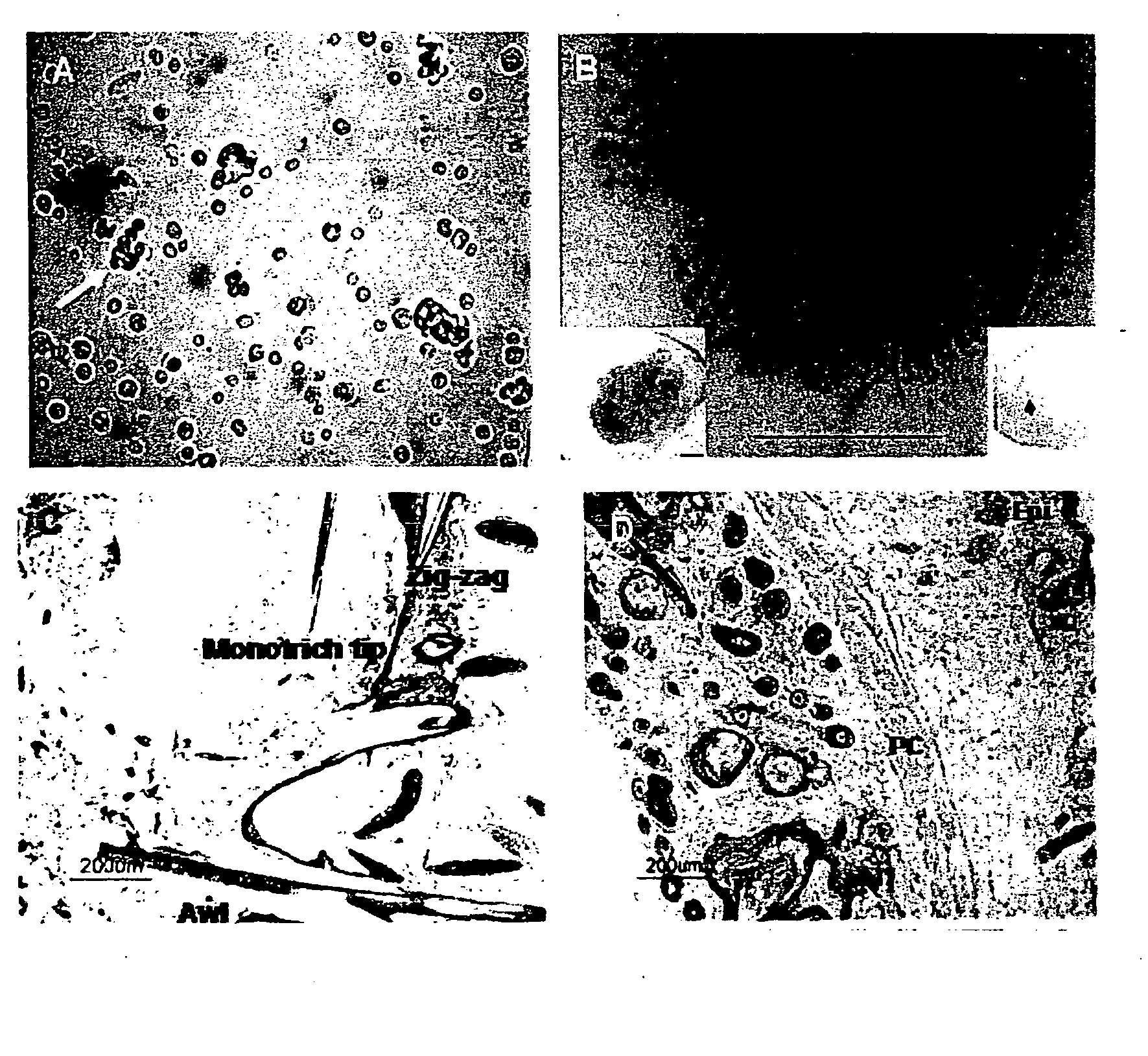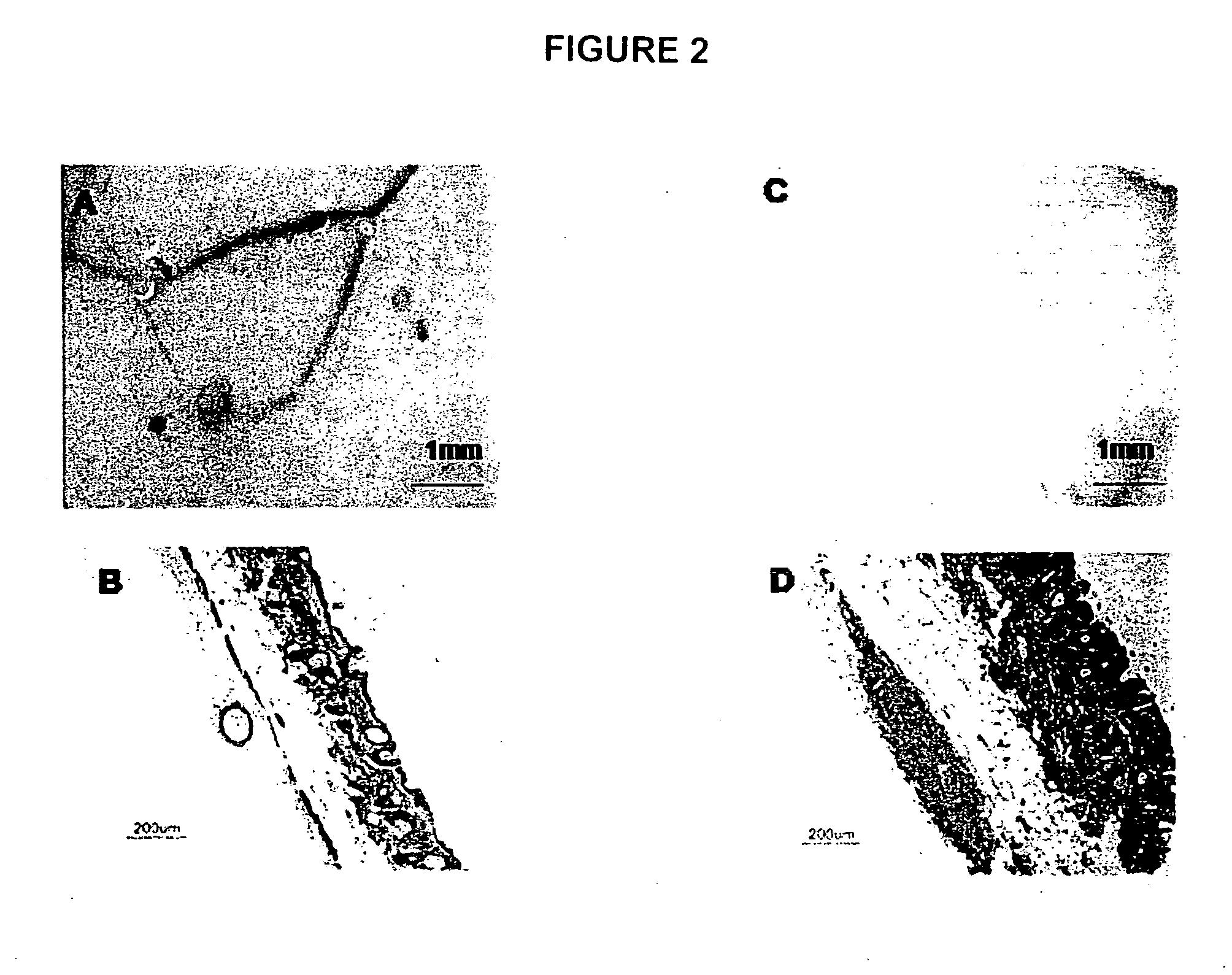Organogenesis from dissociated cells
a technology of dissociated cells and organs, applied in the field of organogenesis from dissociated cells, can solve the problems of limited studies of the cells which contribute to the formation of new follicles, time and number of animals required, and achieve the effect of increasing the number of cells, time and number of animals
- Summary
- Abstract
- Description
- Claims
- Application Information
AI Technical Summary
Problems solved by technology
Method used
Image
Examples
examples
Preparation of Neonatal Mouse Hair Follicle Progenitor Cells
[0049] Mice were purchased from either Charles River, Wilmington, Mass. (pregnant C57B1 / 6 mice) or from Jackson Laboratories, Bar Harbor, Me. {Green Florescent Protein (GFP) mice [FVB.Cg-Tg(GFPU)5Nagy / J]}. Cell preparations followed an adaptation of the procedure of Prouty et al (1996). Briefly, mice were housed in the University of the Sciences in Philadelphia (USP) animal facility, 12 hour light and dark cycles, fed with animal chow (Purina Rodent Lab Diet #5001) and water ad libitum. Following USP IACUC approved protocol, truncal skin was removed from newborn mice and rinsed in Ca++ and Mg++ free PBS. The skin was laid flat in PBS containing Dispase (2.5 mg / ml, Invitrogen, Carlsbad, Calif.) at 4° C. overnight or at 37° C. for 2 hrs. Subsequently, inductive dermal cells and epidermal aggregates were isolated as previously described (Weinberg et al., 1993, Lichti et al 1993, Prouty et al., 1996). Cells were used either t...
PUM
| Property | Measurement | Unit |
|---|---|---|
| period of time | aaaaa | aaaaa |
| pH | aaaaa | aaaaa |
| life-time | aaaaa | aaaaa |
Abstract
Description
Claims
Application Information
 Login to View More
Login to View More - R&D
- Intellectual Property
- Life Sciences
- Materials
- Tech Scout
- Unparalleled Data Quality
- Higher Quality Content
- 60% Fewer Hallucinations
Browse by: Latest US Patents, China's latest patents, Technical Efficacy Thesaurus, Application Domain, Technology Topic, Popular Technical Reports.
© 2025 PatSnap. All rights reserved.Legal|Privacy policy|Modern Slavery Act Transparency Statement|Sitemap|About US| Contact US: help@patsnap.com



